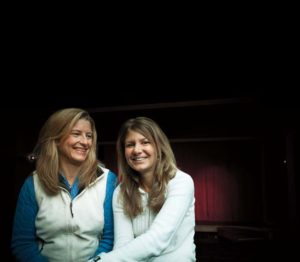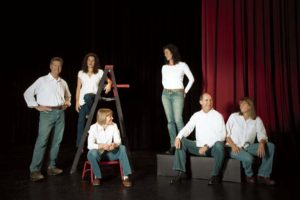How do we heal? And what defines the path toward true and total health? Western medicine treats what ails us, while spiritual practices direct us to look within for illumination. But where do we look to better understand our total health, the health that cannot be tested in a lab or by a CAT scan? What defines this type of health and how do we know when we have achieved it? With these thoughts in mind, we gathered a cross section of individuals within the Valley’s healing community. Our goal: to better understand the components and options of well-being available to us. Some are firmly grounded in science, with years of statistical data to support the theories; others are centered on ancient traditions and their thousands of years of inherited knowledge. What we discovered was an array of practices that we have tried to illuminate through the words of the people who devote their lives to healing. These individuals represent but a small selection of the many dedicated and talented doctors and health and wellness practitioners in the Valley. They follow different disciplines—from Doctor of Medicine to Yogi—but a common purpose unites them all: to help us empower ourselves to make the conscious and active decisions that will better our health and help to balance the essential parts of our being—mind, body and spirit.
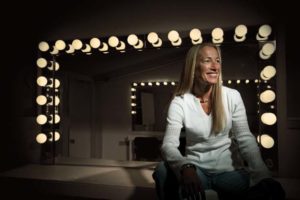
SPIRIT/FAITH
Lea Flocchini Morgan
“People come to me because they are not happy in some area of their lives. They have blocks that are preventing contentment. My job is to be their guide—essentially, I try to get ‘out of the way’ and create a safe and sacred environment to explore and develop their own inner wisdom and insight. My goal is to bring the sacred into partnership with them. I don’t define it; that is not my place and I can’t—it’s too individual. Rather, I invite them to seek the sacred, to explore spirit and somehow, to activate it.” Lea Flocchini Morgan defines optimum health in the context of spiritual balance—the need to remember and redefine what is truly important in our lives. To her, spirit “gives us that sense of wonder and awe.” It is the desire to become a better human being. Morgan is a healing counselor, and she sees her work manifesting like single drops on still water—rippling and radiating from each person outward until they begin to overlap. When a patient finds her balance, she treats others with more kindness, and the spirit spreads.
NUTRITION/NATUROPATHIC
Maria Maricich, D.C. • Molly Peppo Brown
As a former Olympic athlete, Maria Maricich is familiar with optimum health. She believes that we can maximize our potential when we are well, as well as when we have a chronic problem. As she sees it, the basic problem in Western medicine is that it is disease-based; we don’t seek care unless we are already in crisis. It’s a cultural problem, affecting both patients and practitioners. “Over the last 20 years, I have developed a more intuitive aspect of my practice. There is proof that our thoughts are directing our outcomes, and we can’t wait for a health crisis before we tend to our health.”
According to Molly Peppo Brown, the position of chef is the most revered in traditional Zen monasteries because they are the ones who devote energy and intent into the food consumed by all. This philosophy permeates everything Brown does in her own practice and on the menu at her Glow Live Food Café in Ketchum. Brown believes as strongly in nourishing the soul as she does in nourishing the body, but at Glow, the focus is on the food. “What we put into our bodies is a crucial component to our health—and not just what it is, but where it came from and how it was prepared.”
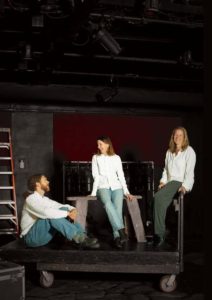
MEDICAL
Tom Archie, M.D. • Nanette Ford, P.A.-C. • Mary Kay Foley, P.T., G.C.F.P.
Tom Archie was completely unaware of most integrative medical practices when he started medical school at UNC-Chapel Hill in 1993, but was exposed to them while studying rural care and family medicine in Colorado. After his residency, Archie turned his focus to alternative practices, training at the School of Functional Medicine and augmenting his M.D. through the acupuncture program at UCLA. He asserts that we can apply the principles of objectivity learned from Western medical training to the practice of alternative therapies. In his practice, Archie brings all of his diverse knowledge to bear, including traditional pharmaceuticals, surgery, acupuncture, Chinese herbs and meditation.
After twenty-four years in practice, Nanette Ford sees herself as the bridge that connects Western medical training (which, she received at UC Davis) and integrative practices using evidence-based natural supplements, bio-identicals, acupuncture, massage, healing touch, counseling and other modalities. “There was a study that discovered that most physicians will interrupt a patient after only 19 seconds on average,” she says, adding how important it is for healthcare providers to listen to more than a patient’s surface symptoms. “I try to listen deeply and with a compassionate heart, as it’s often the only way to get to the root of the issue.”
Mary Kay Foley’s fascination with problem solving drew her to study Feldenkrais. Developed by physicist and engineer Moshe Feldenkrais, the method looks at how movement affects the body and uses movement patterns to explore the mechanics of pain. As the coordinator for St. Luke’s Integrative Therapies Program in Ketchum, Foley doesn’t use the word “alternative” (as it implies “instead of”) when discussing methods like yoga and Feldenkrais. She believes “complementary medicine” is the more accurate term for therapies that extend Western medicine’s reach, addressing not only the body, but also the mind and spirit.
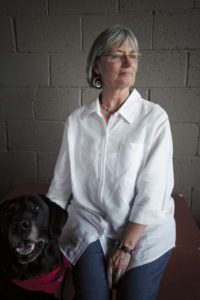
SOCIAL
Gay Miremont, D.V.M., M.S.w., L.C.S.W.
Gay Miremont didn’t start her career in healing as a social worker. Her first healing role was as a veterinarian (D.V.M.), where she learned that while helping the pet, she was working just as much with the owner. This realization, and her affinity for it, prompted her to pursue degrees in social work and eventually led to her role as discharge planner and part-time community outreach coordinator at St. Luke’s Center for Community Health. She learned that patients need to be heard to validate where they are, what they need and where they are going. Her unshakable belief: Most people have the wherewithal and knowledge to help themselves, but whatever crisis they are in has temporarily jumbled up those abilities. She helps patients find those resources to better their physical, emotional and mental health. She says that the most humbling aspect of what she does is being allowed to hear people’s stories. Being trusted to listen is a gift from the people she works with daily, she says. Her hope for the community is that we grow through relationships that are based on understanding and acceptance of where each of us is and where we are going.
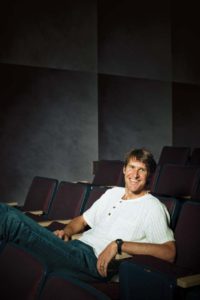
MEDITATION
Ryan Redman
“I see myself as somebody who is acting as a guide—not necessarily giving something to somebody that they don’t already have, but helping them interpret and discover what is already within them. Sometimes this is as simple as allowing the space and time for reflection.” Ryan Redman uses Hatha Yoga for his physical practice, Ayurvedic Indian traditions for fueling the body and Buddhist meditation and other traditions for the mind and spirit. He embodies the spirit of practice in his own life, meditating daily and working to bring “life into his practice rather than bringing practice into his life.” His ultimate goal is to inspire others to live more meaningful lives. Rather than our usual focus on temporary achievements, Redman believes that mindful living uncovers what is deep and naturally within ourselves.
BODY/INTEGRATIVE
Richard Odom • Beth Chiodo • Joan Scheingraber, L.Ac. • Shawn Colvin, L.M.T.
Rodney Blount • Cally Huttar, Ph.D., L.Ac.
Richard Odom is one of the Valley’s most beloved yoga teachers, and for him the practice is purely experiential: You learn by doing. Odom can distill his 30-plus years of experience exploring health into one simple goal: to distract the mind from all of its “stuff” and bring it into the present moment.
According to Beth Chiodo (craniosacral therapist, Pilates trainer, body-mind centering™), ”Everybody comes with a whole set of history and issues, and you have to get to the one thing that changes the entire matrix of belief that they are in. It is not about me teaching them, but about co-empowerment through thought and free will.”
Joan Scheingraber (acupuncturist, Chinese herbal medicine) believes that each of us holds the blueprint to our own healthy state—something she defines by the amount of vibrancy we have in life. “Our true nature is health, and we are always seeking to return to that state of balance,” she says.
Shawn Colvin, left, (craniosacral therapist, Shiatsu, meridian energetics) began her apprenticeship in massage when she was just 15 years old. Today, her work with craniosacral therapy and the Eastern traditions of meridian energetics has led her to study the ideas behind quantum physics and an assessment of the vibrational quality of health and healing.
Rodney Blount, center, (Blount Method of Applied Energetics) holds six Western qualifications and has studied with seven Eastern masters over the last 40 years of his energetics healing practice. He believes that good health is a process, not an event, and that overcoming disease often involves a substantive shift in the mind set. “Our current cultural definition of health is to be fit, or super-fit, as evidenced by the fact that our models of wellness are currently our athletic superstars,” he says. Because this concept is physical, “it is not necessarily reflective of the whole life or the whole person…happiness, fulfillment, feeling loved and experiencing a sense of vibrancy of spirit are perhaps better indicators of complete health.”
Cally Huttar, right, (acupuncturist, Chinese herbal medicine, Buddhist meditation) believes partnership is essential to the healing process, as she often sees isolation as a component of health and pain issues. She works to provide “an opportunity, or window,” to help somebody shift patterns in their lifestyle.


